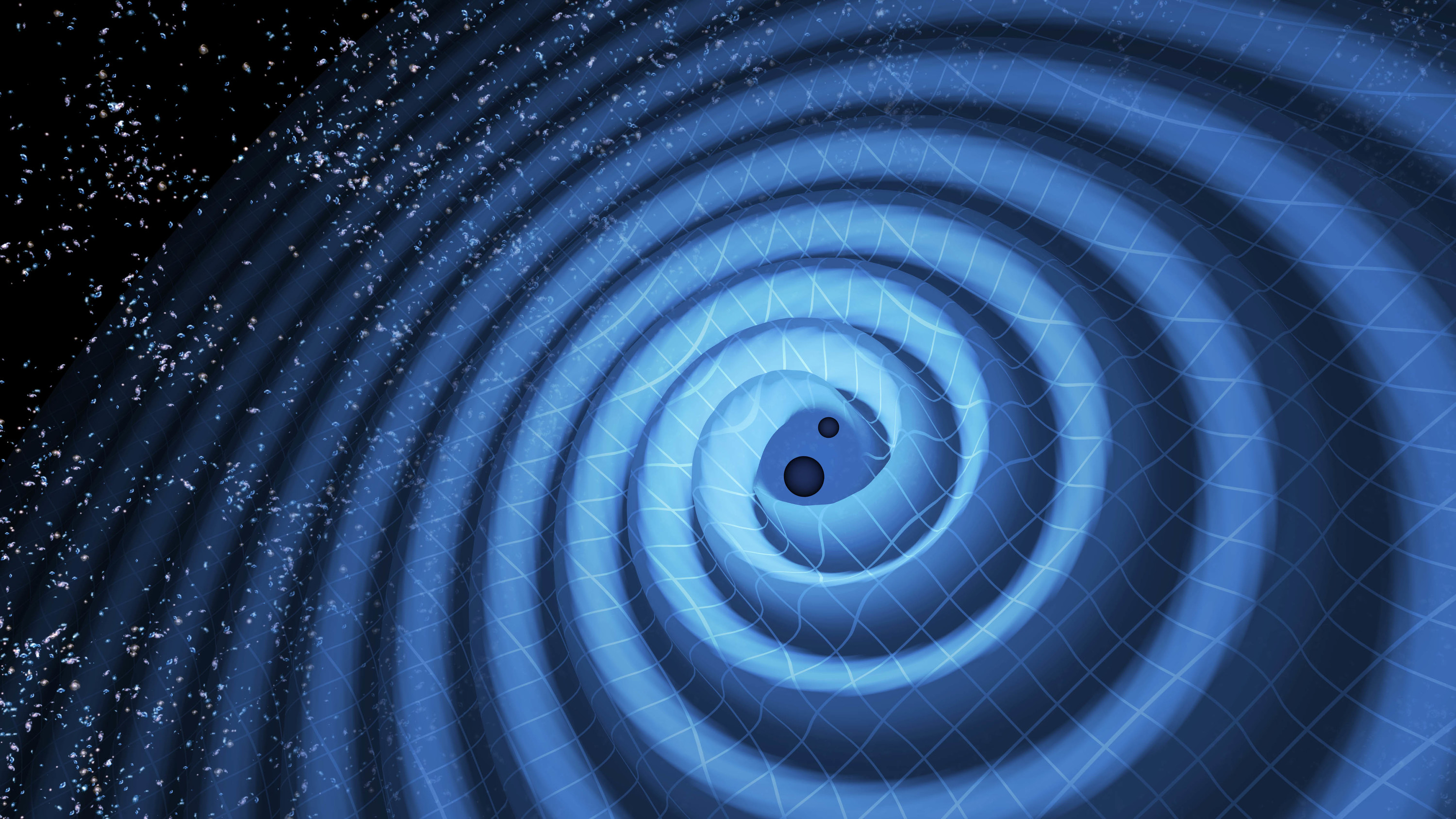Gravitational Waves Ripple Through Scientific Community

Newly spotted ripples in space-time are making waves in the scientific community.
The recent announcement of a second gravitational wave detection by the Laser Interferometer Gravitational Wave Observatory (LIGO) has sparked excitement and enthusiasm even among scientists not directly involved in studying these wrinkles in space and time. Space.com spoke with several astronomers at the 228th meeting of the American Astronomical Society (AAS) in San Diego, California, to gauge their reaction.
"The first detection was like going from being blind to being able to see," said Meg Urry, president of the AAS and an astrophysicist at Yale University in Connecticut. "[The second] is like the image is getting less blurry." [Again! Gravitational Waves Detected from 2nd Black Hole Collision (Video)]
Two is better than one
In September 2015, after coming back online following a significant upgrade, the LIGO facilities (one in Louisiana and another in Washington state) detected gravitational waves rippling through space-time. This was the first direct detection of the space-time ripples, which Albert Einstein had predicted a century before in his theory of general relativity. LIGO's discovery was announced in February; on June 15, the LIGO team announced a second ripple, detected in December.
"They were very lucky with their first detection," said David Helfand, a professor of astronomy at Columbia University in New York. The signal reported in February was larger than scientists had predicted, so large that LIGO scientist and spokesperson Gabriela Gonzalez said the team initially doubted the signal's reality. Helfand said the first signal was so pronounced in the LIGO data that it's presence was apparent even to astronomers who don't usually work with gravitational waves.
Derek Buzasi, an astronomer at Florida Gulf Coast University, joked that one event makes an observation while two makes a statistic. He went on to say that multiple observations of objects and events help scientists to better understand the phenomena. As more detections pile up and "the unique events become routine, that will really be earth-shattering," he said.
Breaking space news, the latest updates on rocket launches, skywatching events and more!
On that same note, other scientists at the meeting cautioned that drawing information from only two events should be done with care. Eric Hintz, an astronomer who studies variable stars at Brigham Young University in Utah, said he looks forward to a time when LIGO has made 50 to 100 detections from individual events. At that point, scientists will have a better understanding of the "common" characteristics among gravitational wave signals and those that exhibit unusual properties, he said.
Having two detections occur so close together is also significant, scientists said. While gravitational waves are thought to pass through Earth multiple times each day, LIGO isn't sensitive enough to pick up all of them.
The second detection should help gravitational wave scientists better estimate how often collisions between black holes occur, said Nancy Morrison, a retired astronomer who studied massive stars at the University of Toledo in Ohio.
"It's exciting that this came so quickly after the first one," Morrison said.
The observations open the door to learning more about black holes, which do not radiate light directly and therefore cannot be studied "directly" using traditional telescopes, said Meredith Rawls, a graduate student in astronomy at New Mexico State University.
"Until now, we had to use light" for all observations, Rawls said. "Now we can use gravity. … It's a new way to do astronomy."
Francis Wilkin, an astronomer at Union College in New York, agreed with Rawls, saying the detection of gravitational waves opened up "a whole new window on the universe."
From the fringes to the mainstream
A growing number of detections could also help fuel excitement about gravitational waves, said one astrophysicist, who asked not to be identified. Gravitational wave science was previously viewed as being on the fringes of astronomy, he said. With the two confirmed detections, gravitational waves have become more "mainstream," the scientist said.
He added that a growing number of signals detected by LIGO could boost the astronomy community's interest in future gravitational wave detectors. Every 10 years, the U.S. National Research Council produces a report called the Decadal Survey, in which the council makes suggestions for missions or areas of inquiry that the astrophysics community should focus on in the coming decade. This document typically influences how NASA chooses to spend its astrophysics budget. If LIGO continues to detect gravitational waves at such a rapid clip, it's possible that the upcoming report, which will be released in 2020, could recommend further investment in the newly spotted phenomena, the scientist said.
"It's just such a significant moment," Urry said. "It's one of the things that makes you proud to be a scientist."
Follow Nola Taylor Redd on Twitter @NolaTRedd or Google+. Follow us at @Spacedotcom, Facebookor Google+. Originally published on Space.com.

Nola Taylor Tillman is a contributing writer for Space.com. She loves all things space and astronomy-related, and always wants to learn more. She has a Bachelor's degree in English and Astrophysics from Agnes Scott College and served as an intern at Sky & Telescope magazine. She loves to speak to groups on astronomy-related subjects. She lives with her husband in Atlanta, Georgia. Follow her on Bluesky at @astrowriter.social.bluesky

